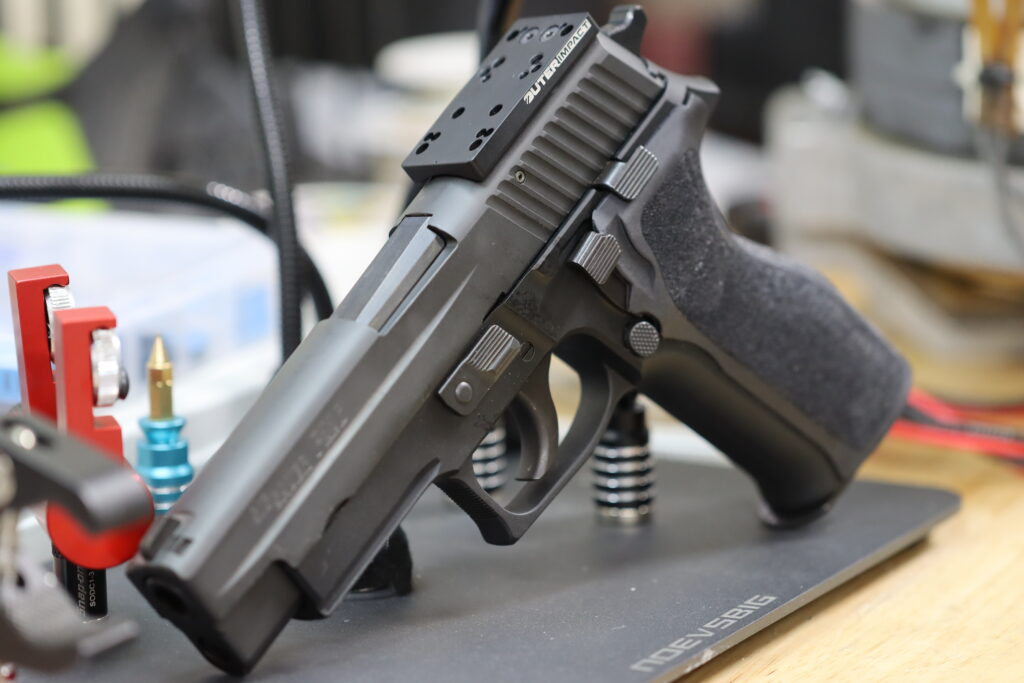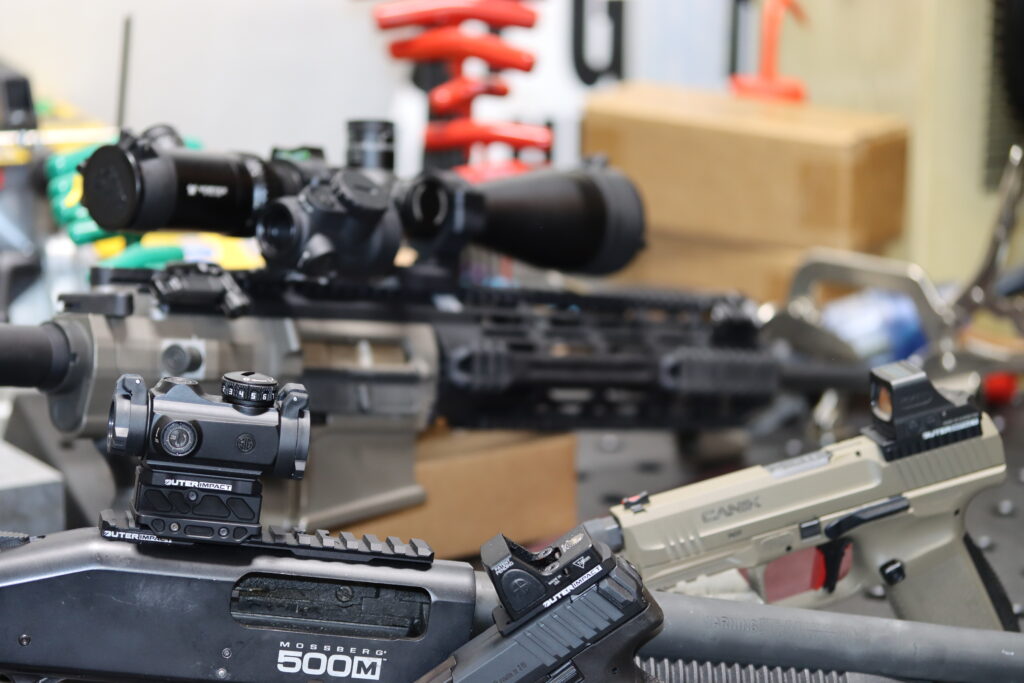Reflex Sights vs. Other Red Dot Optics: What You Need To Know
Introduction: When it comes to choosing a red dot optic, shooters are often faced with a myriad of options, each with its own set of advantages and disadvantages. In this guide, we’ll compare reflex sights to other types of red dot optics, including holographic, prismatic, and hybrid sights, to help you make an informed decision. All OuterImpact mounts are precision machined from aircraft grade billet 7075 aluminum and backed by a Lifetime Warranty.

Reflex Sights: Reflex sights, also known as non-magnifying sights, are the most common type of red dot optics. They feature a simple design with a single objective lens and a partially reflecting window that projects an illuminated reticle onto the target. Reflex sights offer unlimited eye relief, making them ideal for fast target acquisition and close-quarters shooting scenarios.
Holographic Sights: Holographic sights, pioneered by EOTech, utilize holographic technology to project a reticle onto the shooter’s field of view. Unlike reflex sights, which rely on LED or laser illumination, holographic sights create a three-dimensional reticle image, providing shooters with a more precise aiming reference. Holographic sights are prized for their versatility and rapid target acquisition capabilities.
Prismatic Sights: Prismatic sights combine the compactness of reflex sights with the magnification of traditional rifle scopes. These sights utilize a prism to bend and focus light, providing shooters with a magnified sight picture and illuminated reticle. Prismatic sights are ideal for shooters who require magnification for longer-range engagements but prefer the simplicity and durability of red dot optics.
Hybrid Sights: Hybrid sights combine features from multiple types of red dot optics into a single package. These sights often feature a primary red dot or holographic reticle for close-range shooting, along with a secondary magnified optic for longer-range engagements. Hybrid sights offer shooters the flexibility to adapt to various shooting scenarios without switching between multiple optics.
Pros and Cons Comparison:
| Reflex Sights | Holographic Sights | Prismatic Sights | Hybrid Sights | |
| Pros | – Unlimited eye relief – Lightweight and compact – Simple design and operation | – Precise aiming reference – Versatile reticle options – Excellent target acquisition speed | – Magnification for longer-range engagements – Compact design – Illuminated reticle | – Versatility for both close and long-range shooting – Adaptability to various scenarios – Combines features of multiple optics |
| Cons | – Limited reticle options – Slightly less precise aiming | – Bulkier design – Battery dependency – More expensive | – Limited field of view – Increased weight – Eye relief may vary | – More complex design – Higher cost – Potential for more points of failure |

Conclusion: When choosing between reflex sights and other red dot optics, it’s essential to consider your specific shooting needs and preferences. Reflex sights offer simplicity and reliability, while holographic, prismatic, and hybrid sights provide additional features and versatility. By understanding the pros and cons of each type of optic, you can select the one that best suits your shooting style and requirements. You can read more of our red dot series here.
